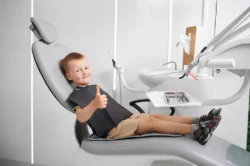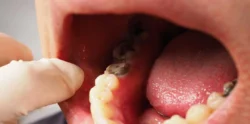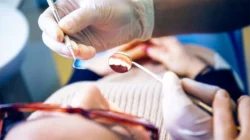Wisdom teeth removal is one of the most common dental surgeries. In fact, according to research, over 10 million wisdom teeth are removed each year in the United States. And while the number is staggering, it doesn’t change the fact that many people are afraid of wisdom teeth removals. From a lack of information to previous bad experiences, people tend to avoid wisdom teeth removal for various reasons. However, we are here to lift the veil on wisdom teeth surgery and take a look at the ins and outs of this widespread procedure.
What Are Wisdom Teeth?
Third molars, also known as wisdom teeth, are four teeth that grow the back of each corner of our mouth. Usually, they start growing when we are between 17 and 25 years old, and they can easily be spotted on X-ray.
Why Would Dentists Remove Wisdom Teeth?
Although wisdom teeth are a normal part of our mouth, there are a variety of dental problems that may warrant their removal:
- Impacted Teeth: Since wisdom teeth are far back in our mouth, they may not come in normally. Therefore, they can get trapped inside our jawbone or gum, which is not only uncomfortable but also extremely painful.
- Wrong Angle: Sometimes, wisdom teeth may come in at a wrong angle, pressing against other teeth. As a result, they might move or dislodge nearby teeth from their original position.
- Not Enough Room: Some people have a smaller jaw which doesn’t have enough room for a fully grown wisdom tooth. Allowing wisdom teeth to grow may damage other teeth and cause further complications.
- Teeth Decay: Because of their position, wisdom teeth are harder to brush or floss, making them more susceptible to tooth decay. If wisdom teeth decay is ignored, it can promote the spread of gum disease or even cause infections.
Wisdom Teeth Removal Procedure
Before deciding whether or not you should get a wisdom tooth removal, the dentist will need to check your teeth. By using X-rays, they will be able to identify possible problems that may arise once your wisdom teeth start erupting. If the dentist deems that you need removal, they will then handle the procedure himself or forward you to an oral surgeon.
Before Surgery
Regardless of who will carry out the removal, the doctor will have to prepare you for the procedure, first by finding out if you are allergic to any anaesthetic or if you have any health problems that might endanger the procedure. Additionally, you need to decide what kind of anaesthetic you want to go for:
- Local: The doctor will numb the area nearby the targeted wisdom tooth with a shot of novocaine, lidocaine or mepivacaine. You can also breathe laughing gas to relax or even doze off during the procedure. If you go for local anaesthesia, you should be back on your feet as soon as the procedure is over.
- IV Sedation: The surgeon numbs your mouth while also giving you drugs through a vein inside your arm, in order to make you feel sleepy. As a result, some patients can end up falling asleep during the procedure.
- Total: By feeding you drugs through a vein or breathing gas through a mask, the doctor will put you to sleep. And while the procedure takes about 40 minutes, you may not wake up for almost an hour after the removal.
During Surgery
Generally speaking, wisdom teeth removal takes anywhere between 20 and 40 minutes, depending on the depth of the roots. After the area has been numbed, the doctor proceeds to remove the tooth using forceps. If your tooth is already damaged, the doctor may end up cutting parts of your gum and bone to get it out.
Once everything is done, the area will get stitched up to prevent pieces of food from entering the hole. Those special stitches dissolve in a few days and accelerate the healing process. Furthermore, the doctor will sometimes place gauze pads inside your mouth to soak up most of the blood.
After Surgery
Since everybody reacts differently to anaesthesia, you should wait a few minutes before leaving the doctor’s office. Local anaesthesia and IV sedation shouldn’t have any lasting effects, meaning that you may be able to drive back home. However, if you opted for general anaesthesia, you may still feel drowsy, and you will need someone to take you home.
Additionally, even though you won’t feel too much pain after the procedure, you may experience swelling and discomfort for three days afterwards. And while the bleeding should stop in a few hours, it is not uncommon for it to last up to 12 hours. It’s worth mentioning that if you experience any pain or excessive bleeding after one day, you should call your dentist.
Wisdom Teeth Removal Aftercare
After the surgery, your mouth might need a few weeks in order to completely heal. During that time, you will have to protect the exposed extraction area. Failure to do so can result in bleeding, swelling or even infections. The following tips are designed to help you protect the blood clot and increase the healing rate:
- Don’t Touch the Area: It’s important to remember that the blood clot protecting the socket is extremely fragile. As a result, even your tongue can dislodge it, causing pain and bleeding. We recommend that you avoid touching the area when brushing your teeth or eating.
- Don’t Smoke or Drink: Smoking and drinking increase the chance of infections and could also end up damaging the blood clot. Therefore, you should take a break from both, at least for a couple of weeks.
- Avoid Strenuous Physical Activity: After an extraction, you should avoid intense physical activities such as working out or jogging. Otherwise, you will increase your blood pressure which may cause local bleeding.
- Don’t Eat Dairy: Since dairy products contain bacteria that could cause an infection, you should avoid them for at least one week after extraction.
- Avoid Straws: Drinking through a straw is one of the most common ways in which patients cause bleeding and swelling. Why? Because using a straw creates negative pressure inside your mouth, which can dislodge blood clots.
The Bottom Line
All in all, although they can seem intimidating, wisdom teeth removals are a necessary part of our lives. In fact, sometimes, tooth extractions are the only way we can protect the rest of our healthy teeth. And thanks to countless technological advancements, the procedure is much safer and painless than it ever was.







